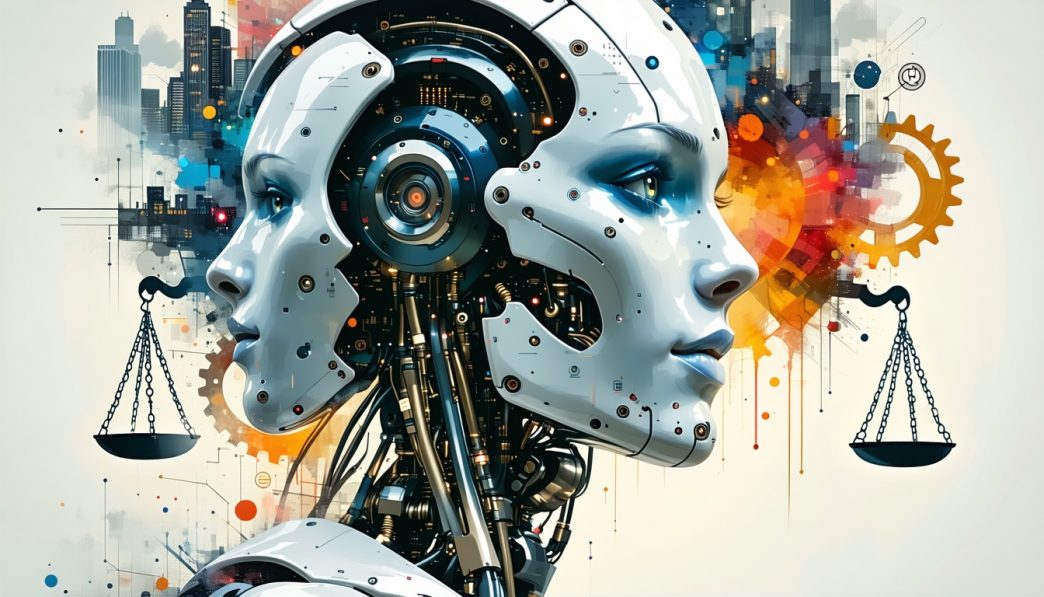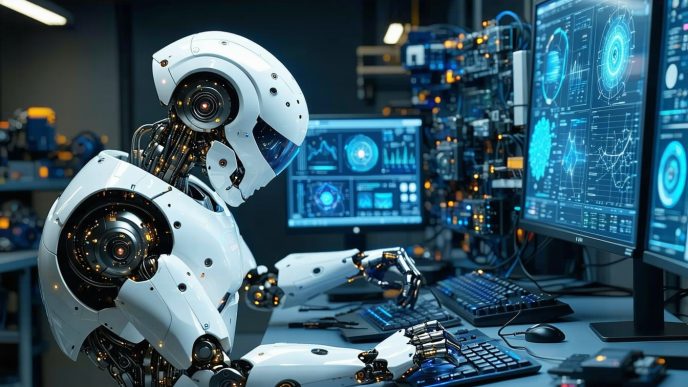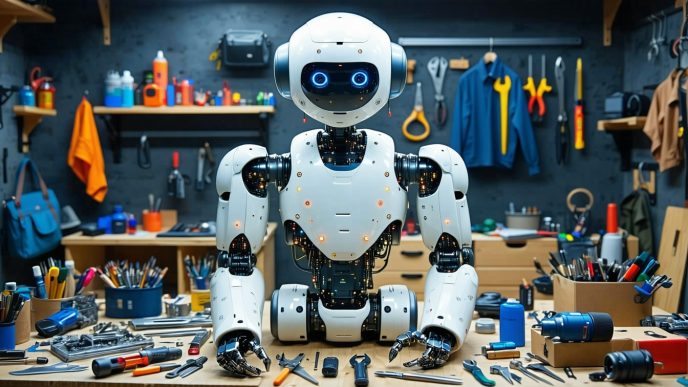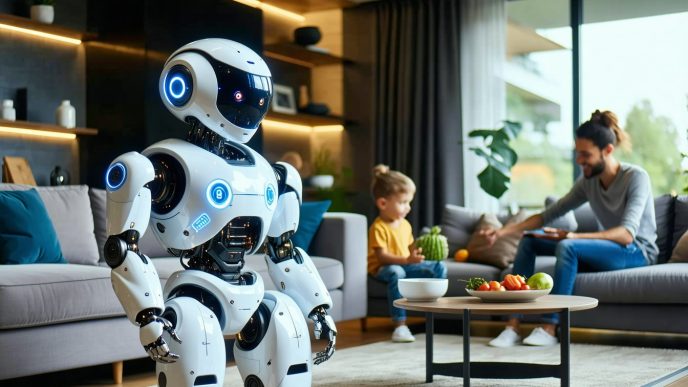The Intersection of Robots and Emotions
The Rise of Emotional Intelligence in Robots
In recent years, there has been significant progress in developing robots that possess emotional intelligence. This advancement allows robots to recognize, interpret, and respond to human emotions in more sophisticated ways. Emotional intelligence in robots involves utilizing sensors, data analysis, and algorithms to gauge human emotional states.
Various robots use emotion recognition technology to bridge the gap between machines and humans. They can analyze facial expressions, vocal tone, and physiological signals to derive emotional context. The goal is to enhance interactions and create a more empathetic experience. Below is a summary of different emotional recognition capabilities found in robots:
| Robot Type | Emotion Recognition Method | Primary Use Case |
|---|---|---|
| Companion Robots | Facial expression analysis | Elder care and companionship |
| Customer Service Robots | Voice tone recognition | Enhanced customer interaction |
| Healthcare Robots | Biometric sensors | Patient monitoring and care |
As robots become increasingly capable of understanding emotions, they may play vital roles in settings such as healthcare and customer service. For further insights on how robots are enhancing these fields, consider reading more about humanoid robots in healthcare and robot interaction in customer service.
Ethics and Considerations
As robots gain emotional awareness, ethical implications arise concerning their interactions with humans. The question of whether robots should simulate emotions and how they should behave in emotional contexts is crucial. Ethical guidelines must be established to prevent misuse and ensure compassionate behavior from robotic systems.
Key ethical considerations include:
- Privacy Concerns: Emotional robots collect personal data, raising potential privacy issues. It is essential to establish frameworks for handling sensitive information.
- Emotional Manipulation: The potential for robots to exploit emotional connections must be monitored to prevent manipulation or deception.
- Human Relationships: The development of emotionally intelligent robots may change the dynamics of human relationships. Society must consider how these changes influence emotional wellbeing.
The emergence of emotional robots necessitates dialogue about humanoid robots and privacy as well as careful examination of emotional manipulation implications. Establishing guidelines will help navigate these ethical challenges, ensuring that robots contribute positively to human interactions.
Understanding the intersection of robots and emotions is vital in shaping future advancements and determining their place in society.
Understanding Robot Emotions
The concept of robot emotions involves the ability of machines to interpret human feelings and express their own emotional responses. This capability is crucial for fostering more meaningful interactions between humans and robots.
How Robots Interpret Emotions
Robots use various methods to interpret emotions. These methods often include facial recognition technology, voice analysis, and body language analysis. By combining data from these sources, robots can gauge the emotional state of a person and respond appropriately.
Facial Recognition: Robots utilize cameras equipped with advanced algorithms to analyze facial expressions. Different expressions such as smiles or frowns provide cues about a person’s mood.
Voice Analysis: Robots can assess the tone, pitch, and speed of speech to derive emotional context. A raised voice can indicate excitement or anger, while a soft tone may suggest sadness or calmness.
Body Language: The posture and movements of a person offer additional context for emotional interpretation. For example, crossed arms might indicate defensiveness, while open gestures can signal openness or friendliness.
| Emotion | Interpretation Method |
|---|---|
| Happiness | Facial recognition, voice analysis |
| Sadness | Voice analysis, body language |
| Anger | Facial recognition, voice analysis |
| Surprise | Facial recognition, body language |
Robots analyze this emotional data using machine learning models, which help improve their understanding over time. For more about the methods used, explore our article on emotion recognition in robots.
Expressing Emotions Through Robots
Once robots interpret emotions, they must express their own emotional responses effectively. This expression can be achieved through various means such as visual displays, verbal communication, and physical gestures.
Visual Displays: Many robots have screens or LED indicators that can change colors or display emoticons to convey feelings. For example, a smiling face may appear when expressing happiness.
Verbal Communication: Robots can use speech synthesis to verbally express emotions. A robot might say, “I am happy to see you!” using a cheerful tone to enhance the interaction.
Physical Gestures: Some advanced robots can mimic human gestures. For instance, a robot might wave its arms to welcome someone, enhancing its ability to appear friendly.
Combining these expressive methods allows robots to create a more engaging and relatable experience for users. This dual aspect of emotional interpretation and expression is vital in the ongoing discussion about robot emotions and ethics.
By enhancing emotional intelligence in robots, developers aim to improve human-robot interactions, fostering trust and understanding in a range of applications from personal companionship to customer service.
Applications of Emotional Robots
Emotional robots are increasingly being integrated into various sectors, demonstrating their potential beyond traditional robotic functions. Two significant areas of application include healthcare and customer service.
Healthcare and Companion Robots
In the healthcare sector, emotional robots are making strides as companions and assistants for patients. These robots can provide emotional support, engage in conversation, and assist with daily tasks. They are particularly beneficial in settings such as elder care, where companionship can significantly enhance the quality of life for elderly individuals.
| Application | Benefits |
|---|---|
| Elder Care | Reduces loneliness and provides interactive support |
| Rehabilitation | Encourages emotional engagement during therapy sessions |
| Monitoring | Tracks health metrics and alerts caregivers when necessary |
Healthcare robots contribute to improved emotional well-being by offering consistent interaction, which can lead to enhanced mental health outcomes. For more on this topic, refer to our article on humanoid robots in healthcare.
Customer Service and Interaction
Emotional robots are also making waves in customer service, providing personalized experiences for users. These robots can interpret customer emotions, tailoring interactions to enhance satisfaction. From greeting customers to processing inquiries, emotionally intelligent robots can provide more human-like responses than traditional automated systems.
| Application | Advantages |
|---|---|
| Retail | Improves customer engagement and loyalty |
| Support Systems | Offers quick, empathetic responses to inquiries |
| Information Assistance | Provides tailored information based on user emotions |
By incorporating emotional intelligence, robots can foster a more positive atmosphere in service environments, ultimately leading to better customer relationships. For insights on how robots interact with customers, check out our discussion on humanoid robots for companionship.
These applications highlight the potential of robots to enhance human interaction quality across various facets of life, emphasizing the importance of addressing robot emotions and ethics as they become more integrated into society.
Implications on Society
As robots, especially humanoid varieties, become increasingly capable of understanding and expressing emotions, their integration into society raises significant questions about acceptance and human relationships. The development of emotional robots brings forth various implications that merit discussion.
Social Integration and Acceptance
For humanoid robots to coexist harmoniously with humans, social acceptance is paramount. Factors influencing this integration include the robots’ ability to demonstrate emotional intelligence and their design. Studies indicate that more human-like features can lead to increased acceptance among the public.
| Factors Influencing Acceptance | Description |
|---|---|
| Human-Like Appearance | Robots with more relatable features often garner a positive response. |
| Emotional Response Ability | A robot’s capacity to understand and respond to human emotions can enhance interactions. |
| Transparency and Ethics | Clarity regarding the robot’s functions and ethical considerations around its use can foster trust. |
The gradual acceptance of robots in social settings is essential for unlocking their potential in everyday life. Implementation in environments such as healthcare or education can serve as a pathway for broader societal acceptance. For instance, humanoid robots in elder care demonstrate emotional support, which can positively impact relationships between caregivers and patients. More on this application can be explored in our article on humanoid robots in elder care.
Impact on Human-Robot Relationships
The development of emotional comprehension in robots significantly alters the dynamics of human-robot relationships. As these robots can recognize emotions and respond appropriately, they can forge deeper connections with users. This relationship evolution leads to various scenarios.
| Relationship Scenarios | Description |
|---|---|
| Companionship | Robots designed for companionship may provide emotional support, reducing feelings of loneliness. |
| Augmented Interactions | In customer service, emotionally aware robots can create more satisfying and empathetic interactions. |
| Cultural Shift | As familiarity with emotional robots increases, societal norms around interaction may evolve. |
Challenges remain as well, such as ensuring the robots behave ethically and maintain user privacy. Ethical concerns surrounding emotional intelligence in robots are crucial for promoting safe interactions. Readers interested in exploring these topics can check our article on robot emotions and ethics.
Ultimately, the implications of emotionally intelligent robots extend beyond mere functionality; they influence societal structure and individual relationships, paving the way for a future where humans and robots coexist more seamlessly.
Challenges in Emotionally Intelligent Robots
As robots become increasingly capable of processing and interpreting emotions, they also present unique challenges, particularly regarding ethical behavior and the handling of sensitive information. Addressing these issues is crucial for the responsible development and deployment of emotionally intelligent robots.
Ensuring Ethical Behavior
Ensuring that robots behave ethically encompasses several considerations. One significant challenge is designing algorithms that allow robots to recognize and react to human emotions appropriately. This requires not only advanced emotion recognition capabilities but also an understanding of social norms and ethical frameworks.
To assess the ethical implications of robot actions, several factors must be taken into account:
| Factor | Consideration |
|---|---|
| Decision-Making | How will a robot make decisions when faced with ethical dilemmas? |
| Emotional Manipulation | Is there a risk that robots could manipulate human emotions for undesirable purposes? |
| Accountability | Who is accountable for a robot’s actions, especially when they impact human well-being? |
Developers must create guidelines and frameworks to ensure that robots operate within acceptable ethical boundaries. Continuous evaluation and adjustment of these guidelines will be necessary as technology evolves. For more on how robots can recognize emotions, visit our article on emotion recognition in robots.
Handling Sensitive Information
The integration of emotional intelligence in robots raises concerns regarding data privacy and the handling of sensitive information. Robots designed to interact with humans emotionally often collect vast amounts of personal data to understand emotional states better. This data could include voice patterns, facial expressions, and personal preferences.
Key challenges in managing sensitive information include:
| Challenge | Description |
|---|---|
| Data Security | Ensuring that personal data is securely stored and protected from breaches. |
| Consent | Obtaining informed consent from users regarding data collection and usage. |
| Transparency | Providing users with clear information about how their data will be used or shared. |
Developers need to establish stringent data protection measures and ensure compliance with regulations to protect individuals’ privacy rights. The balance between leveraging data for better interaction and safeguarding personal information is crucial in fostering trust in robots. For further insights into how robots interact within the human space, see our article on humanoid robots for companionship.
Addressing these challenges is essential for creating emotionally intelligent robots that align with societal values and expectations, paving the way for their successful integration into various aspects of daily life.
Future Prospects
Advancements in AI and Robotics
The field of artificial intelligence (AI) and robotics is advancing rapidly, promising innovative solutions that enhance the functionality of humanoid robots. These advancements focus on improving various aspects, such as emotional intelligence, machine learning, and interaction capabilities.
The integration of AI allows humanoid robots to learn from their environment and adapt their responses based on user interactions. This capability is crucial for developing socially aware robots that can understand and respond to human emotions accurately.
The table below highlights some of the key advancements in AI and robotics:
| Advancement | Description |
|---|---|
| Emotion Recognition | Technology that enables robots to identify human emotions through facial expressions and voice tone. |
| Machine Learning | Algorithms that allow robots to learn from experiences, making them more responsive over time. |
| Natural Language Processing | Enables robots to understand and engage in human language more effectively. |
| Enhanced Sensors | Improvements in sensor technology for better environmental awareness and interaction. |
These advancements are not only crucial for enhancing robot interactions but also play a significant role in addressing the ethical considerations regarding robot emotions and ethics.
The Potential of Emotional Intelligence in Robots
The ability to equip robots with emotional intelligence presents substantial potential benefits for various applications. As robots become increasingly adept at recognizing and responding to human emotions, they can effectively assist in areas such as healthcare, education, and companionship.
For example, in healthcare settings, emotionally intelligent robots can offer support and empathy to patients, improving their experience during treatment. In education, robots can adapt their teaching methods based on the emotional responses of students, thereby fostering a better learning environment.
The following table summarizes the potential applications of emotionally intelligent robots:
| Application Area | Potential Benefits |
|---|---|
| Healthcare | Improved patient interaction and support. |
| Education | Enhanced learning experiences through tailored approaches. |
| Customer Service | More effective interactions that lead to higher satisfaction. |
| Companionship | Providing emotional support and reducing feelings of loneliness. |
As the technology progresses, the ethical implications of these developments remain a crucial topic for discussion. Ensuring that robots behave ethically while managing their interactions with humans will continue to be a significant challenge as emotional intelligence becomes more prevalent in robotic systems.














